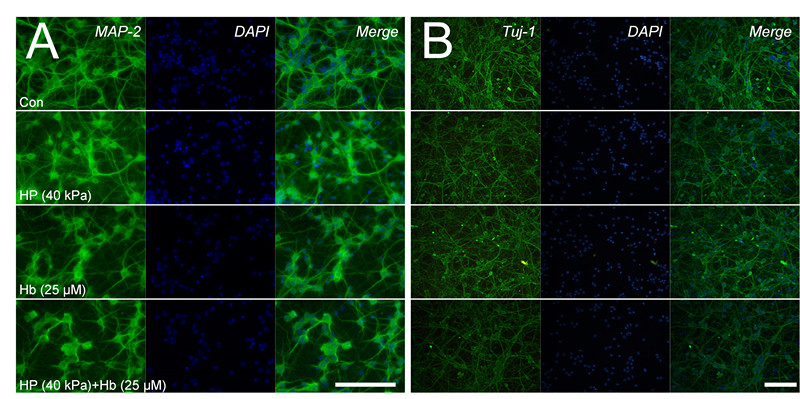脑出血(Intracerebral hemorrhage, ICH)具有极高的致死率和致残率,其发生发展引起了国内外学者的广泛关注。ICH的发生发展受到占位效应、血液成分、血红蛋白降解产物、炎症反应以及遗传等不同因素的影响。目前临床及基础研究主要集中于血液成分、血红蛋白降解产物和炎症反应所导致的脑组织损伤机制以及相应的干预策略。而占位效应同样对ICH的发生发展具有重要影响,其不仅影响脑组织的物理结构甚至导致脑疝,而且与ICH后的死亡率以及预后水平具有十分紧密的联系。
本研究基于生物力学的研究方法,根据血肿以及水肿产生的占位效应对周围脑组织发挥梯度静压力的作用,设计体外可控的静压力加载细胞模型和体内ICH占位效应动物模型。探究不同大小静压力对细胞或者不同占位体积对脑组织的影响,以及寻找力学传导过程中的关键蛋白;同时考察静压力与血红蛋白的共同作用,为ICH过程中血肿及水肿产生的占位效应诱导的静压力对其周围脑组织的影响提供理论与实验。
该课题由郭廷旺博士完成。已被Scientific Reports 杂志接收!
Neural Injuries Induced by Hydrostatic Pressure Associated With Mass Effect after Intracerebral Hemorrhage
Tingwang Guo, PhD1,2, Peng Ren, PhD1,2, Xiaofei Li, MA1,2, Tiantian Luo, MA1,2, Yuhua Gong, PhD1,2, Shilei Hao, PhD1,2,*, Bochu Wang, PhD1,2,*
1 Key Laboratory of Biorheological Science and Technology, Ministry of Education, College of Bioengineering, Chongqing University, Chongqing 400030, China
2 Collaborative Innovation Center for Brain Science, Chongqing University, Chongqing 400030, China.
ABSTRACT
Mass effect induced by growing hematoma is one of the mechanisms by which intracerebral hemorrhage (ICH) may result in brain injuries. Our goal was to investigate the damage mechanism of hydrostatic pressure associated with mass effect and the cooperative effect of hydrostatic pressure plus hemoglobin on neural injuries. Loading hydrostatic pressure on neurons and injecting agarose gel in the right striatum of rats was performed to establish the in vitro and vivo ICH models, respectively. The elevated hydrostatic pressure associated with ICH suppressed neurons and neural tissues viability, and disturbed the axons and dendrites in vitro and vivo. Moreover, hydrostatic pressure could upregulate the expression of cleaved-caspase-3 and BAX, and downregulate Bcl-2 and Bcl-xL. Meanwhile, the toxicity of hemoglobin would be enhanced when conducted with hydrostatic pressure together. Furthermore, the exclusive hydrostatic pressure could upregulate the Piezo-2 expression, which reached a plateau at 8 h after ICH. And hemoglobin increased Piezo-2 expression significantly in vivo, and that was also promoted significantly by the elevated volume of Gel in the cooperative groups. Results indicated that hydrostatic pressure induced by mass effect not only gave rise to brain injuries directly, but also increased the toxicity of hemoglobin in the progress of secondary brain injury after ICH.
